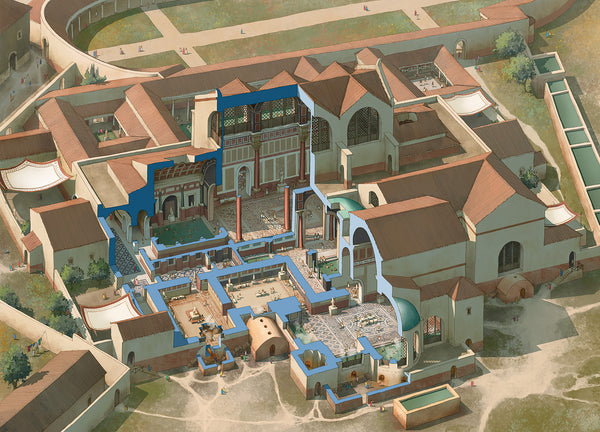Ancient History Along the Via Degli Dei
By Owain Williams
I have recently got back from completing the Via Degli Dei, a 130-km-long walk from Bologna to Florence (or vice versa) through the Apennine Mountains. It was a fantastic – and pretty hard – walk, with long climbs, harsh declines, and stunning views. It was also a route with lots of history. Given the popularity of the Medici, much of the history connected to the walk is related to them. Indeed, Florence is full of museums dedicated to them. However, there was also a surprising amount of ancient history to be on the route!
Bologna itself is a city with a storied ancient past. First an Etruscan settlement, then later settled by the Boii, and finally turned into the Roman colony of Bononia. It was here – or nearby – that Mark Antony, Octavian, and Lepidus created the agreement that formed the basis for the so-called Second Triumvirate. Unfortunately, I did not stay in Bologna long enough to properly explore all there was to explore, although it is a much slower-paced city than Florence, and well worth a visit.

On my third day of walking, as I neared the border between Emilia-Romagna and Tuscany, I started to see signs pointing to an ancient Roman road. This was, supposedly, the Via Flaminia Minor, also known as the Via Flaminia Militare to help distinguish it from the larger Via Flaminia. It was construted in the early second century BC by Gaius Flaminius, after he defeated the Ligurians in the region, connecting Bologna and Arezzo, ancient Arretium (see Livy, 39.2.6). Parts of this road were uncovered by two amateur Italian archaeologists in the 1970s, and the remains, while not the most impressive, are still striking, especially after walking along stony dirt tracks for several hours!
On the same day, depending on how you break up the 130-km-long route, you can also find a small complex of lime kilns, dated to the second century BC, near Incisa. First discovered by farmers, the white fragments they found were thought to have been bones, giving the site the name Piana degli Ossi, or Plain of Bones. This is a very small, nondescript site that is easy to miss, especially as you plod your thirtieth kilometre of the day.

The biggest piece of ancient history you’ll find on the trip is on the last day, as you near Florence. Above the city known for its vibrant Medeival and Early Modern history, atop a high ridge, sits the small commune of Fiesole. Known as Viesul, Viśl, or Vipsul, before being called Faesulae after the Romans conquered it in the third century BC, Fiesole was a significant Etruscan centre in northern Tuscany. However, most of the impressive archaeological remains there, such as the theatre and the baths, are Roman, although you can see the remains of the Etruscan temple, dated to the fourth century BC, amongst the later Roman remains. There is a museum at the site, but eager to finish my journey, I did not go in.
Once you’re in Florence, you are bombarded with Medieval and Early Modern history. Various palazzi bearing the names of Medieval families, such as the Pazzi and Albizzi, line the streets, and the Palazzo della Signoria looms large above the city, as does the Duomo. Yet there is still ancient history to be found! Beneath the Palazzo della Signoria, for example, are the ruins of a Roman theatre, from back when Florence was the Roman city of Florentia. The highlight of Florence for any ancient history buff, however, is the Museo archeologico nazionale di Firenze, which has an expansive collection of Egyptian, Etruscan, and Roman artefacts, many of which have been used in Ancient History! For me, the highlights were an Eighteenth-Dynasty Egyptian chariot, the famous Chimera of Arezzo, and the François Vase, and these are only a mere fraction of what can be found in the museum.
For anyone who wants to punish their feet and knees along the Via Degli Dei, make sure you keep an eye out for these ancient sites!




